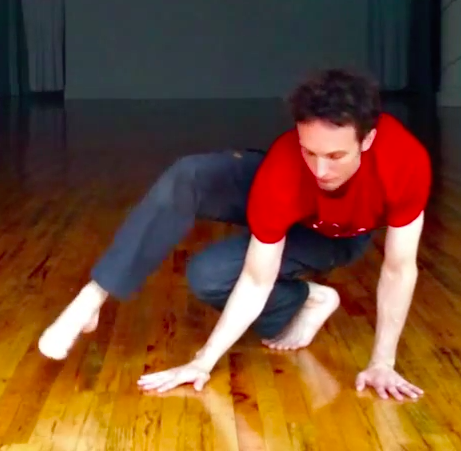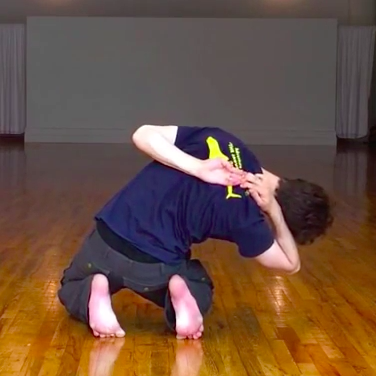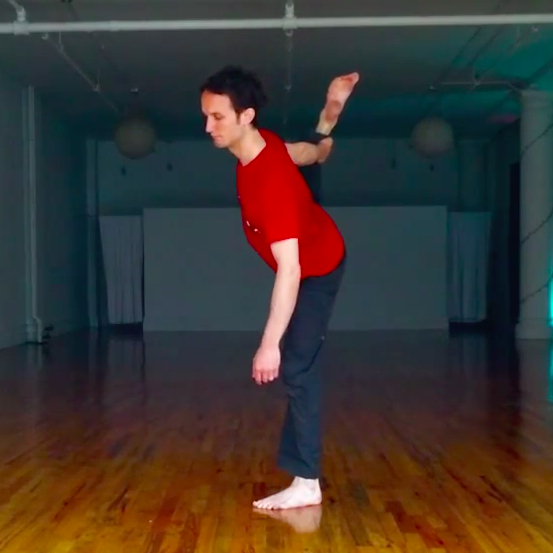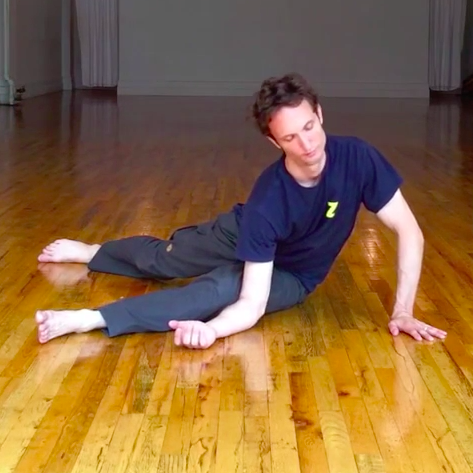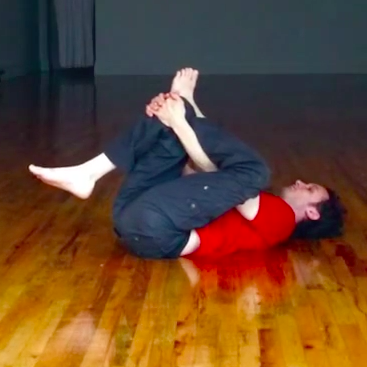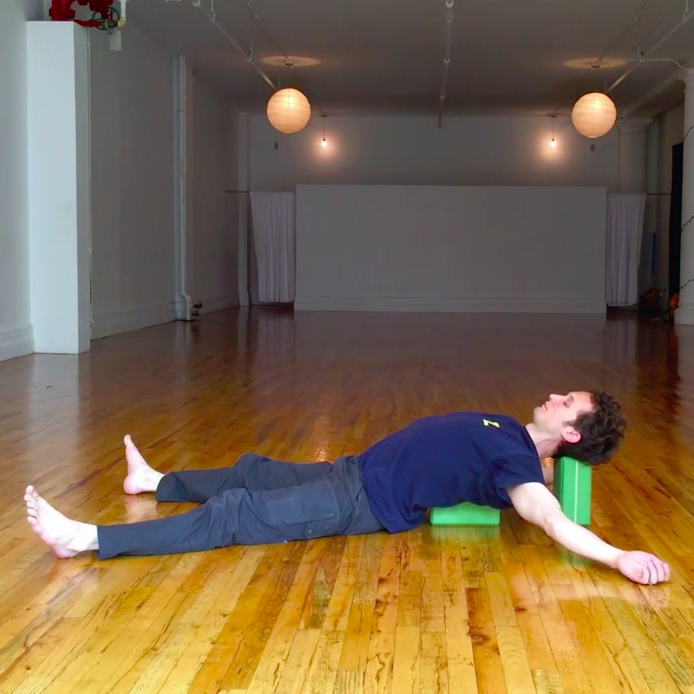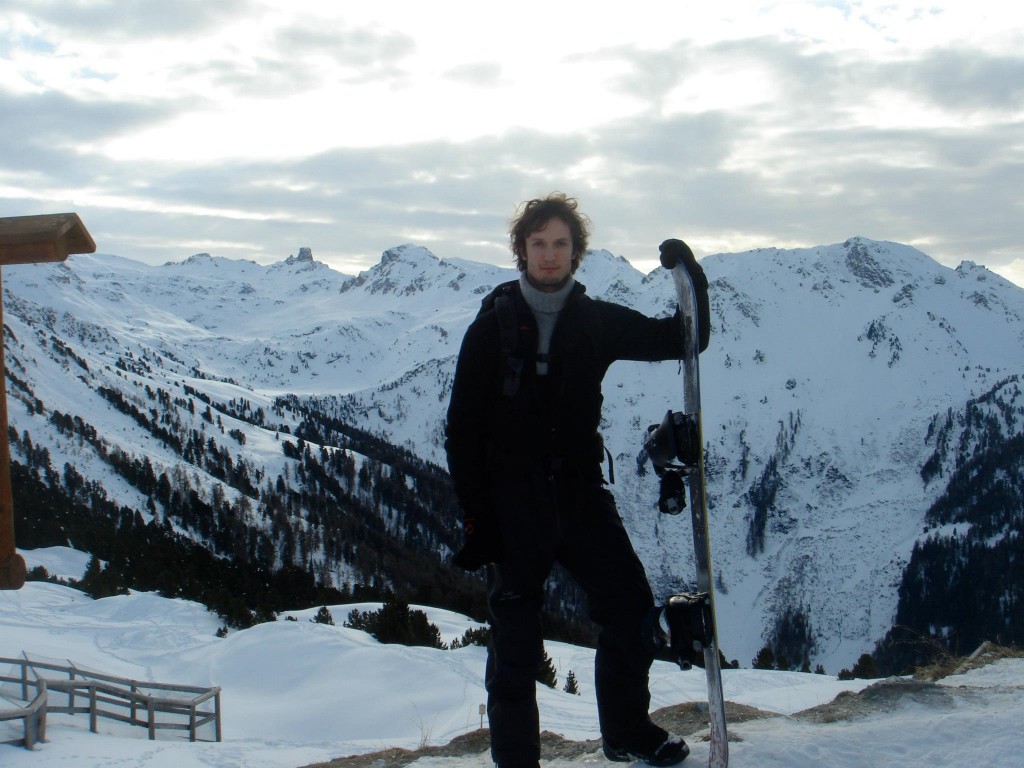We’ll talk mostly running here, but the principles are the same for nearly every athletic endeavor.
Want to run faster for longer, develop explosive power and agility, with fewer injuries and shorter recovery times? Follow this basic cross-training principle:
Move easy,
everything you’ve got,
in every direction you can.
The focus here is on becoming more easily movable. It’s your best way to go from good to great on usable power, agility, and endurance. And this isn’t achieved much by stretching, pushing, or struggling.
Better mobility is achieved by practicing better mobility. This is a simple principle common to nearly every East Asian art form, from painting and calligraphy to healing and martial practices.
First, practice softening, enough that your mind is movable.
Your body follows your mind here.
Second, move without inhibiting your own movement.
No flexing or tensing, no isolating or immobilizing. When you move completely – bringing your whole self into everything you do – you learn grace and coordination. You also create the right conditions for healing and recovery, which includes creating a stable body.
By exploring well beyond your usual linear exercises and everyday movement, you get to know what you’ve got, and you can become very good at working with it.
Naturally people often ask “What poses are best for running?” Whether it’s football or basketball, cycling or swimming, climbing up mountains or flying down them on skis, the short answer is all the same. It’s less important what poses you do, and more important How you do everything you do. Things like hamstring and hip openers are nice. But as an athlete, you want a couple of things:
1) Movement. You want to move easily, without using force to overcome resistance in your own body. When you’re already at war with yourself, you don’t have much energy remaining for the obstacles you meet outside.
2) Balance. You want a good balance between stability and mobility, strength and flexibility. Too much of strength and stability is like a rock, hard to move and not so great on endurance. Too much of mobility and flexibility is like water without a glass, not so usable, and leaving you prone to joint injury.
Most of us are unbalanced toward the less movable side. Of course there are some exceptions: performance artists like ballet dancers, Cirque-du-Soleil professionals, and some yoga practicers who become hyper-mobile by pushing into contortionist poses. Stretching into fixed positions over time tends to destabilize vulnerable joints — including shoulders, spine, hips, and knees. For a performance artist this is part of the game. But for the rest of us it’s easy to avoid, through a practice of moving well, rather than pushing into poses.
Yoga moved like a wave into the practice of professional sports teams in the last decade or so. And with the U.S. teams in particular, that wave has been on a steady retreat. The reason is simple. Players were getting injured more often, and the injuries were related to over-stretching.
Looking back, this makes some sense. Teaching a professional basketball player to push into a “correct” idea of what a triangle should look like – or any number of variations like this – doesn’t give so much benefit. It leads to over-stretching and injury. So this kind of idea can be very destructive with athletes, and really with everyone.
These kinds of problems are easily avoided by changing the focus. It’s helpful to move away from the idea of yoga as a practice of poses, to yoga as one form for practice of moving well. It’s the idea of poses that gets in the way, and leads us to push where we shouldn’t push.
The practice of moving well – releasing tension, discovering the habits we carry that don’t work so well, developing new ones that work better – gives the benefits we want, without the negative side effects.
Which brings us back to finding mobility and balance. For the most part, we all carry around so much more stress and tension than we need, which makes it harder to accomplish even simple things, and impossible to accomplish much higher levels of challenge. So our focus is on turning this around. It’s how we make the impossible possible.
Let’s put this into practice, with one more radical training principle.
Go easy on yourself.
It might be the best way to run faster, find more power on the bike, climb to unexplored heights, and pull off unimaginable feats of strength and endurance. It might be the best way for you to do everything there is.
This doesn’t mean go lazy, go floppy, or don’t go at all. It means go. Go without the idea that hard things can only achieved by force and struggle. And go with the idea that you have a choice in how you accomplish everything you accomplish. You can work to gain things in your life by force. You can work to gain things in your life by ease. Chances are, you’re going to like ease better. Chances are, you’re also going to like you better, this way.
How? Avoid smashing headlong against problems and challenges in your life. When you smash against things, things break. You might knock down a few walls this way, but you’ll knock yourself down, too. Get comfortable all around challenges. Move easy, everything you’ve got, in every direction you can move it. Get comfortable all around you.
When you know your way around you, you’re going to knock your own socks off. You’ll have loads of fun seeing things that are supposed to be “hard” just happen for you. No force, no struggle, just doing it. Just doing you.
For runners, this practice will balance out your more linear movement, and release tension so you become more easily movable. For everyone, learning natural movement creates a harmony in your body that makes you unstoppable, literally.
You can always train each part of your body and mind to perform better.
This is how you get all those parts working together as a whole, radically more powerful than the parts.
You’ll use less effort to go faster and longer without tiring. You’ll also be less likely to get injured, and heal faster when injuries do happen.
Now let’s look at specific target areas, for bringing your whole body into harmony, and optimizing performance. There’s a video that guides you through the right practice for each area, and the Breath video puts it all together for an everyday pre and post-run routine.
The language below centers on running,
but the principles remain the same
for nearly every athletic endeavor there is.
Shoulders, Chest, and Back (Video)
As a runner, you want all your moving parts to move easily. Shoulders are moving on every step, so that’s an obvious one: get them moving easy, so you’re not wasting any energy here.
Chest, ribs and back might be less obvious, but are even more important, because of something we know really well: we need oxygen. If you’re tense in your chest, ribs and back, every single breath you take will be fighting against tension as your lungs try to expand. If your muscles are easygoing and movable here, you’ll breathe easy. You won’t be fighting against yourself to do what you need to do.
When you’re sprinting, maybe it’s not so many breaths, but easy mobility through every inch of your upper body is incredibly important.
If you’re fighting with osbtacles inside of you,
you won’t have much left
for the obstacles outside of you.
When you’re going for a longer run, there’s even more breathing to do. The amount of energy you save by breathing fully and easily – no fighting against tense muscles – will win races, and make your runs a whole lot more enjoyable.
Hips (Video)
Everything that moves while you’re running, you want to move easily and happily. Your hips are moving for you every step of the way, so they’re important. With good mobility in your hips, you’ll run faster with less effort, and stay injury-free.
As a runner, you have strong hips. They do a lot of good work for you, and you want a healthy balance here between stability and mobility. Too flexible, and your hips will destabilize; your stride will be less efficient, and you’ll be open to pain and injury. Not flexible or mobile enough, and your hips will be fighting you on every step. You’ll be slower, and use far more energy over the course of a run, which you know isn’t a whole lot of fun.
This routine will give you optimal balance, so your hips stay happy and keep supporting you in the right direction.
Hamstrings (Video)
When your hamstrings are relaxed and movable, you’ll run much faster for longer without tiring. As runners, we don’t need limitless flexibility. In fact, too much flexibility reduces our ability as athletes. What we do want is to have every part of our body working happily with every other part.
We want everything in us happy to move,
and no part of us fighting against movement.
If you fight against movement, you lose.
I know from long runs and time on the bike that tight hamstrings are just a reality. But there are some really good ways to relax them back to happily movable, which make my runs a whole lot faster and more fun. We’ll get started in this routine.
Breath (Video)
Breathing is important for all kinds of reasons. Some are obvious: we need to feed our energy cycle on a cellular level, and remove the waste products of respiration. Some are less obvious, but maybe even more interesting:
Your breath moves you.
It gives you extra strength when you need it. It relaxes and restores you when it’s time to recover. The best part is, you can learn to use your breath to do these things for you right in the middle of a run, by practicing your breath-body connection.
I’ve put some breath-body practice time into this video, with a routine you can use pre and post-run. It will open up your hamstrings, hips, ribs, chest and shoulders. You’ll connect your breath and body together as the same thing, so every part of you agrees and moves well with every other part. You’ll use your breath to lift and strengthen your whole body on each inhale, and relax and restore your whole body on each exhale.
Get good at all this, and it translates into running faster for longer without getting tired. You’ll also feel good, all day long, in everything you do.
Relax (Video)
Bill Murray once said that you always do your best work when you’re relaxed. Of course Bill Murray is a genius, and it turns out this approach also holds true for your athletic performance.
While strain and struggle will carry us to a point, it’s not a sustainable strategy. In fact, it leads to a declining performance curve, and puts a glass ceiling on what we’re each able to accomplish, on both key fronts of power and endurance.
Mechanically, excess tension makes us less movable, and forces us to exert more energy than needed, every step of the way. Chemically, it’s even worse. Our stress response is designed to help us survive chase by a herd of attacking giraffes. We get a few key minutes at peak speed and incredible strength. So this response is well designed for us to survive. But not to live. If we remain here – if it becomes our strategy for performance – our body begins to fail. We tire quickly, become less agile both physically and mentally, recover slowly, and are far more open to injury.
So we’re defeated on two fronts, by ourselves, before we even go outside for battle. There must be a better way.
Use what’s working. Rest what’s not.
Put it another way, always go into battle well-rested. This is a hard thing to do. Battles are scary, and they can interfere with a good night’s sleep. But you can begin to practice this incredibly important principle of movement, right now.
When one part of you is doing the hard work, rather than put all our attention on how hard this part is working, shift your focus to the part of you that isn’t working. Now allow that part to relax and release its tension. Let it go. When it’s time for this part to return to action, it returns no longer depleted, ready for more.
When you’re running, apply this to your stride. Put your attention on releasing stress from the un-weighted leg – from your hip down to your toes – on every step. Now do the same thing for each part of you. Use what’s working, rest what’s not. Here are two training steps to follow:
Step 1. Practice relaxing everything you can relax, rather than focusing on the hard work.
Step 2. Right about mid-run or mid-ride, pull over for 5 minutes, and use this routine to drop the stress from your hamstrings, hips, and back. You’ll discover what it feels like to release tension from parts that were recently working hard. And from here, you’ll have a better sense of how to release this same tension, right in the middle of all your hard work.
We all know stress is a big deal, and to keep moving strong and injury-free, we always want to balance the stress equation, so more of it is leaving our bodies than entering. If you want to go the distance on a long run or ride, this is especially important.
Get good at all this, and it translates into running faster for longer without getting tired. You’ll also feel good, all day long, in everything you do.
More Resources: Videos and Runners Guide
We have a great resource for runners, cyclists, and all-around athletes, that combines a written guidebook with everyday practice videos.
Our Runners Guide to Training gives practicable detail to mindset, approach, and techniques for radically enhancing your mobility, agility, speed, and endurance.
You’ll also discover how to create optimal balance between strength and flexibility, stability and mobility, so your body remains at its most capable under every form of challenge. And you’ll learn some basic approaches to prevent injury, heal faster when injuries do happen, and greatly reduce your recovery time between events.
Included with the Runners Guide are five videos, with more than 70 minutes of routines, targeting key training areas: shoulders, chest, back, hips, hamstrings, breath, and relaxation.
You can get your guidebook and videos here:
Strala for Runners 6-Pack :
Runners Guide to Training + 5 Practice Videos
Thanks everybody, and have fun with this!
– by Mike
About Strala Yoga Training
Strala combines the movement and healing wisdom of tai chi with the form vocabularies of yoga, tai chi, qigong, and Traditional Chinese and Japanese Medicine, to help people release stress, move easily through challenge, and live radiantly inspiring lives.
It begins with a mindset, that says our best way to get where we’re going is to feel good along the way. It also works miracles for whole health, helping us to find ease in our bodies and minds, and create the right conditions both for healing and optimal performance.
In our Strala Training Courses, you learn to shape your destiny on every level that counts, from your psychology, chemistry and neurology, to your chromosomes and even gene expression. The unique set of skills you develop – for connecting with yourself and others, unblocking your energy, healing what needs healing and accomplishing challenge with ease – uncovers your ability to create the life you want, and be an inspiring leader to the people around you.
Who’s What’s and When’s of Strala Yoga Training
About Mike
Mike is the co-founder of Strala, along with his wife Tara Stiles. He studied mind-body medicine at Harvard, and complementary medicine at Oxford. Mike has practiced Eastern movement and healing, including tai chi and qi gong, for more than 30 years.
In his younger years, Mike challenged centuries of martial traditions in hundreds of competitions, by applying unruly imagination to a world where rules were unbreakable. His record established the strength of finding your own way in your own body, rather than copying the techniques of other people’s traditions.
As he got older, Mike continued on to medical applications of the mind-body connection in university. After running into walls with standard medical practice in the U.S. and England, Mike left his healthcare roots. The internet was just getting started, so he joined a web company, and then founded a couple more.
Through Strala, Mike has found his way back to health care done right: helping people let go of stress in their bodies and minds, and become their own best caregivers and life-creators. Mike climbs mountains, is a runner and cyclist, and explores the backcountry on ski and snowshoe in his spare time.


